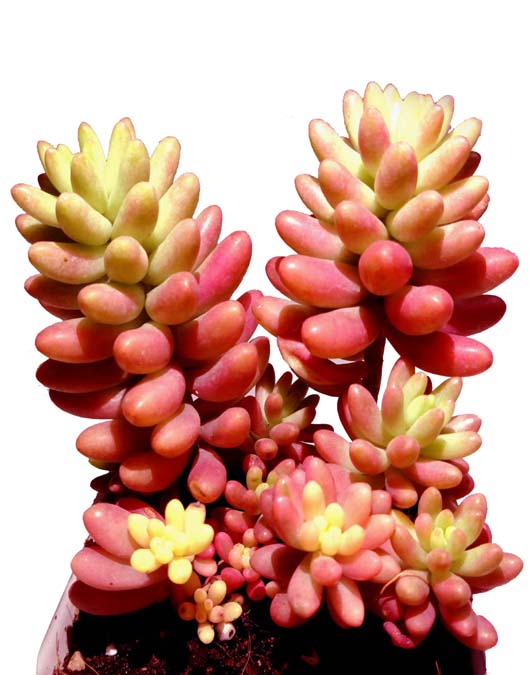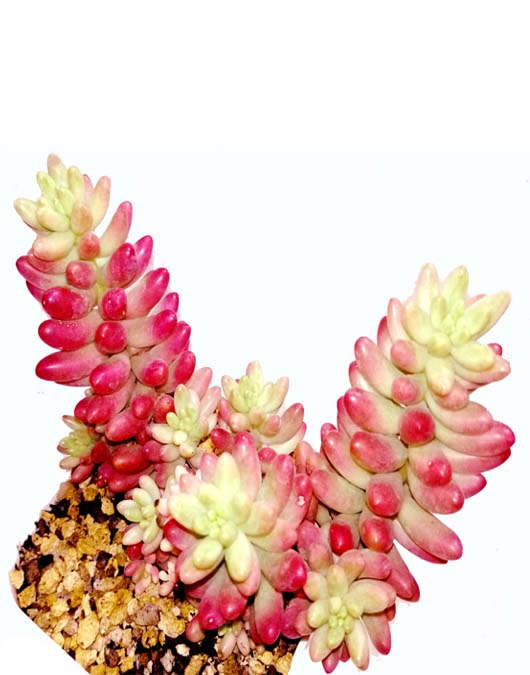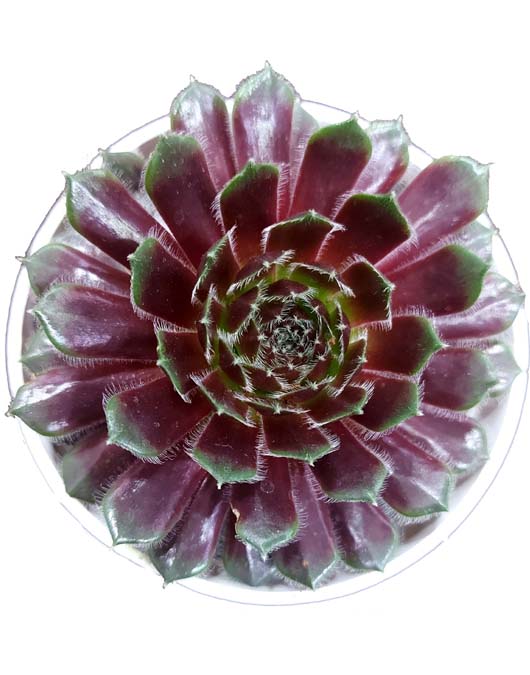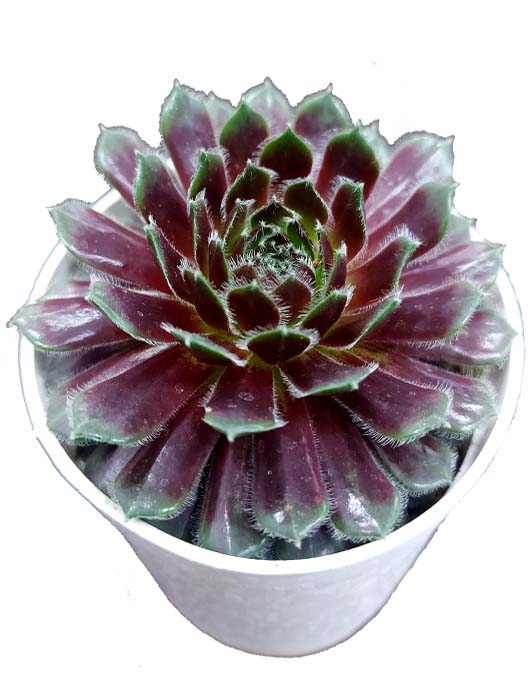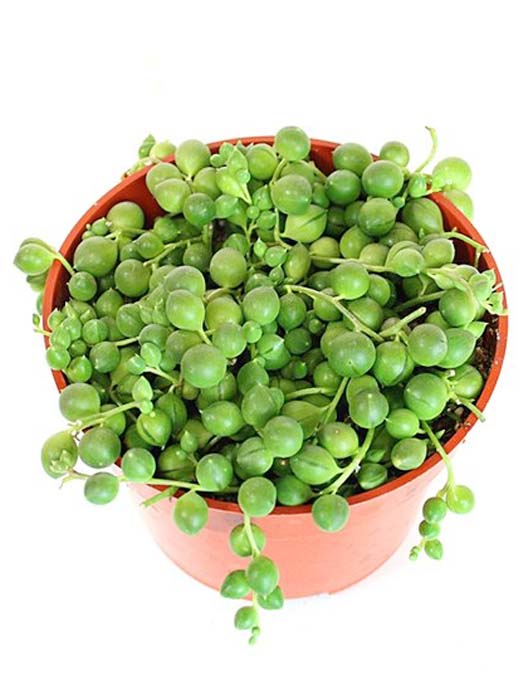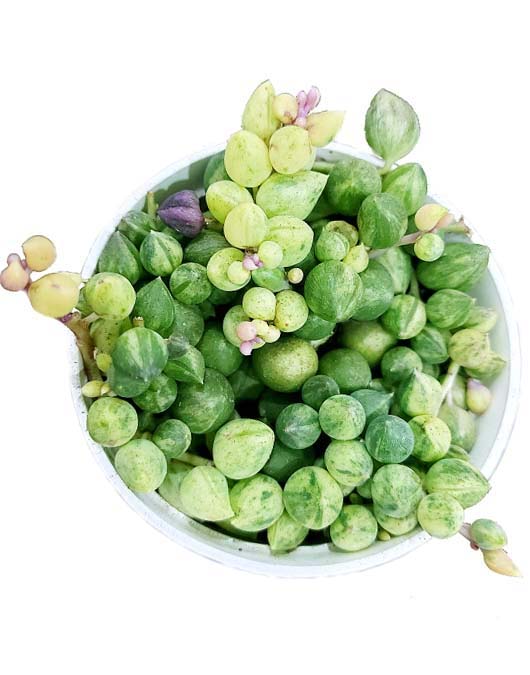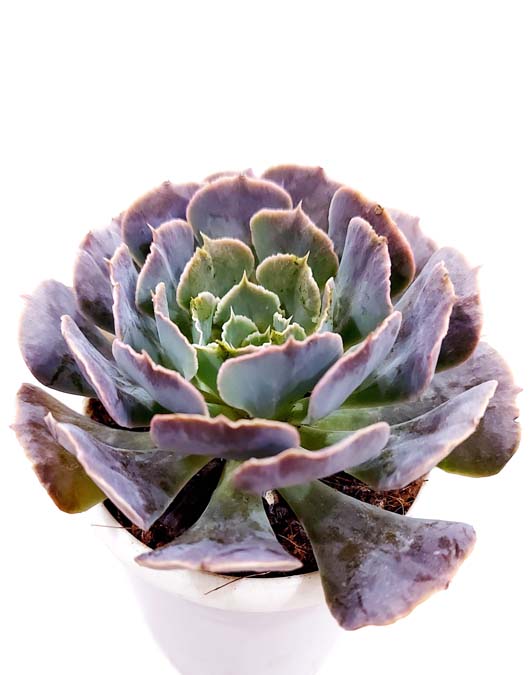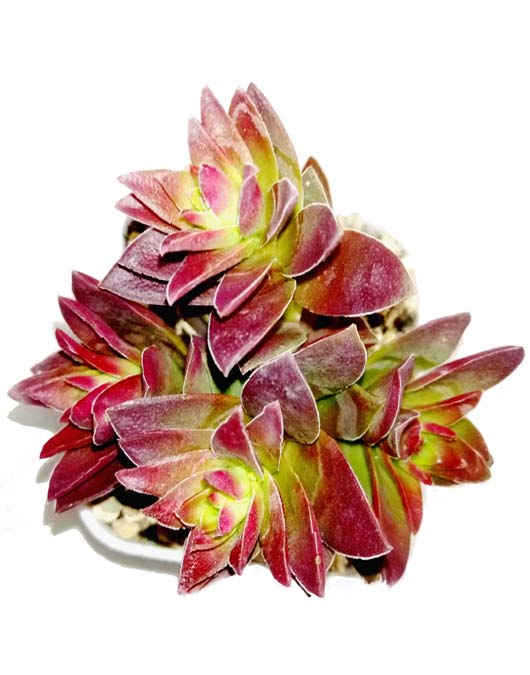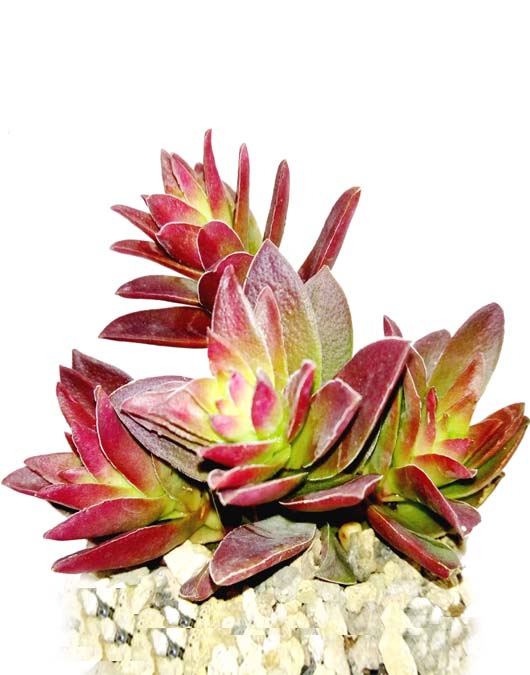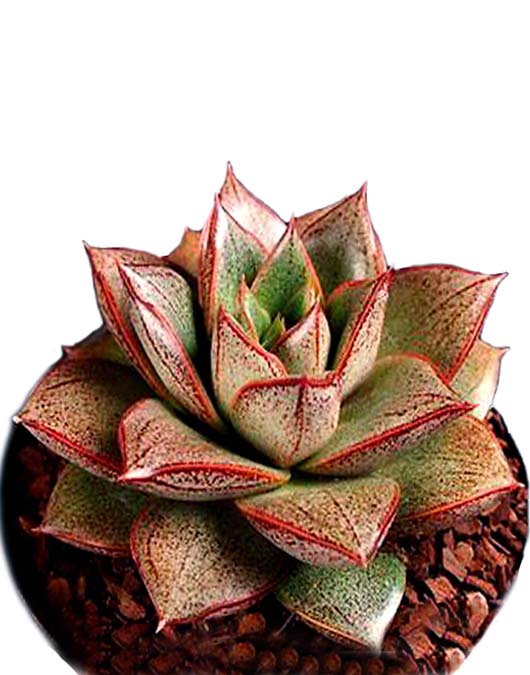- Sempervivum are succulent, rosette forming plants belonging to the Crassulaceae family.
- They are commonly known as Hens & Chicks, Houseleeks or Hen and Chickens. The main attraction of these plants is their colourful rosettes of leaves.
- Rare variety
- Plant Will Be Given With Free Plastic Pot
- Also known as “string of beads” or “Rosary,”
- This succulent is a perennial vine of the Asteraceae family and is native to southwest Africa.
- Like most succulents, it requires very little hands-on care.
- In addition to its unique foliage, string of pearls can produce tiny white flowers with bright-colored stamens. (Some say the blooms smell like cinnamon.)
- Plants Will Be Given With Free Plastic Pot
- Variegated String of Pearls A phenomenal variegated oddity in the succulent world. String of Pearls is a well-loved favorite but its variegated form is a cut above. Its bead-like leaves are mottled with cream, green, and sometimes even pink! The thin, string-like stems can cascade several feet.
- String of Pearls tends to like a bit more water than most succulents. Only water when the soil is dry; a slight wrinkling of the leaves indicates the plant is ready for water.
- produces pom pom-like flowers that smell of cinnamon. Try growing Variegated String of Pearls in a hanging pot
- This variety is easy to re-root from stem cuttings.
- Plant Will Be Given With free Plastic Pot
- Echeveria Shaviana ‘Pink Frills’ is known to be a beautiful succulent that can reach up to 20 cm (8″) tall and around 30 cm (12″) in diameter. Most notable are the leaves that become purple, silver blue to green as it ages. It is known that the plant regularly creates offsets and when it flowers you can expect orange to pink flowers
- This succulent type needs typical watering as the other succulents.
- It is a nice addition to your collection of plants
- Echeveria shaviana is a tender, soft, evergreen succulents native to the mountain areas of Nuevo Leon in northern Mexico.Shaviana belongs to the Echeveria plant genus a member of the Crassula family (Crassulaceae).
- Plant Will Be Given With Free plastic Pot
Out Of Stock
EtonGreen Live Succulent Plant Crassula Campfire
- Crassula capitella, is a perennial succulent plant native to southern Africa.
- This is very colorful and eye-catching branched succulent with densely compact propeller-shaped leaves.
- The foliage of this plant grows in prostrate with lime green color at the bottom and turns red at the tips.
- it grows very fast with a little bit of care and produces vibrant and bright color
- This campfire succulent particularly attracts the bees and butterfly If you are a real lover of butterfly this is the best option for you.
- Plant will be given With Free Plastic Pot
- Water needs only moderate watering when established Keep in direct sun, water in morning, and water only when soil is fully dry
- Its foliage has a very unique and exclusive feature when you give a little bit of stress to this plant it will achieve a vibrant and bright red color mainly in winter.
- This plant is a cluster of rosette shaped leaves in beautiful shades of emerald green, lime green and rose, like glittering jewels.
- ‘Campfire’ requires very little care and prefers a location with good sun and good drainage. Blooms with inconspicuous white flowers
- Crassula Erosula Flame plant are very easy to grow
- Rare Variety
- Plant Will Be Given With free Plastic Pot
- Echeveria purpusorum is a small succulent with tight, usually solitary rosettes that occasionally produce few offsets.
- Echeveria purpusorum is a petite rosette-shaped succulent. They are native to Oaxaca and Puebla, Mexico.
- The genus Echeverria is named after Atanasio Echeverria Codoy, an 18th-century botanist. However, the purpusorum species was discovered by Carl and George Purpus. Carl, a botanist and George, the explorer usually worked together.
- Like most succulents, Echeveria Purpusorum is short and thick-leaved plant. It is known in some circles as The Rose or Urbinia. Its moniker, the rose, comes from its leaves’ arrangement and pigmentation. A full-grown plant resembled a rose flower. This resemblance is reinforced by its red pigmentation along its leaves’ edges.
- Echeveria purpusorum has typical watering needs for a succulent. It’s best to use the “soak and dry” method, and allow the soil to dry out completely between waterings. Be sure not to let water sit on the leaves, and use a well-draining soil.
- Plant Will be Given With Free Plastic Pot
- Graptoveria superbum · This is a Graptopetalum and Echeveria hybrid
- The Latin name Graptopetalum means “marked petals”
- Like most succulents, they need great drainage and infrequent water
- A very popular succulent for its beautiful purple pink foliage.
- Graptopetalum pentandrum superbum is a pretty succulent, forming wide, open rosettes of fleshy, lavender-pink leaves held at the end of thick stems.
- Plant Will Be Given With Free Plastic Pot

